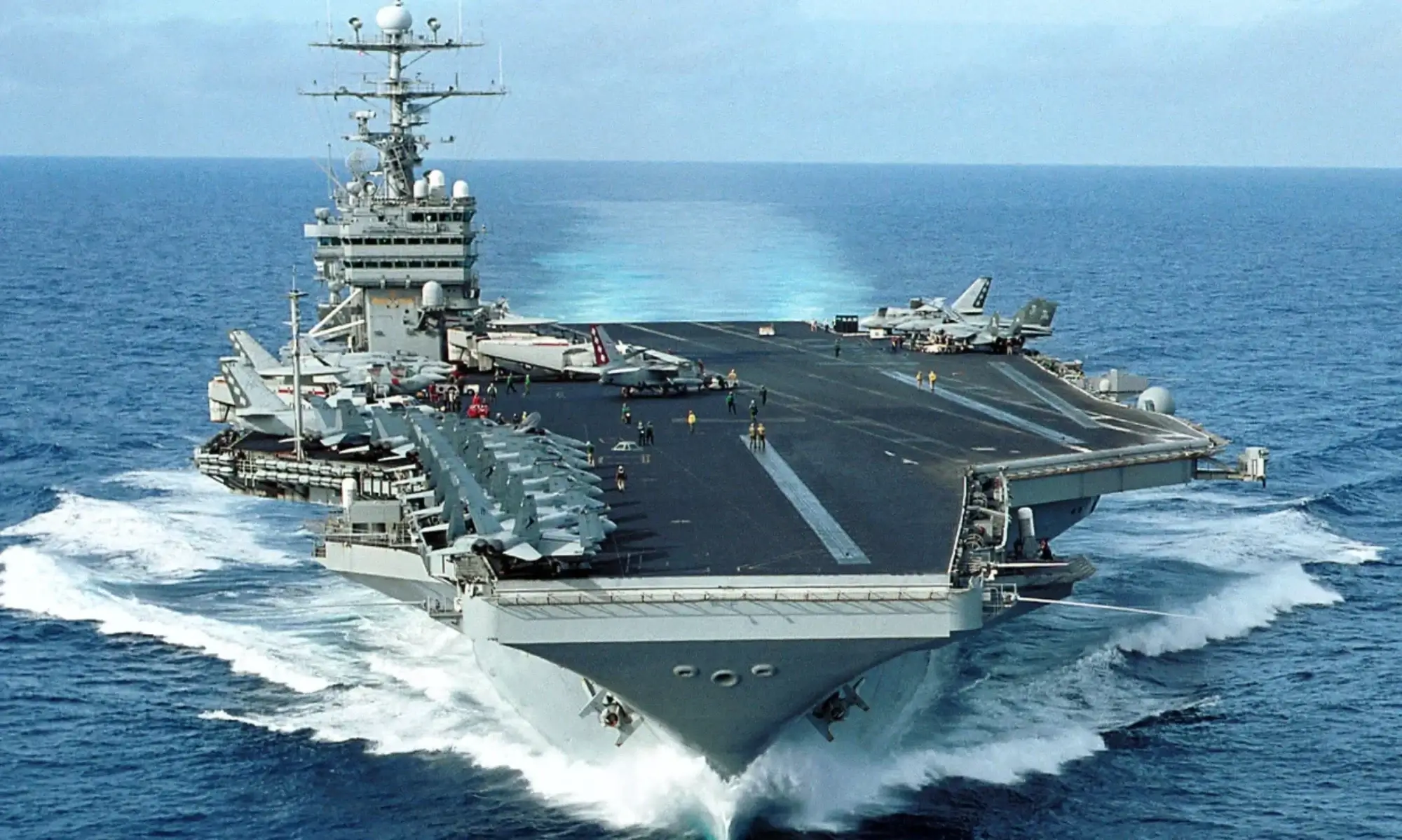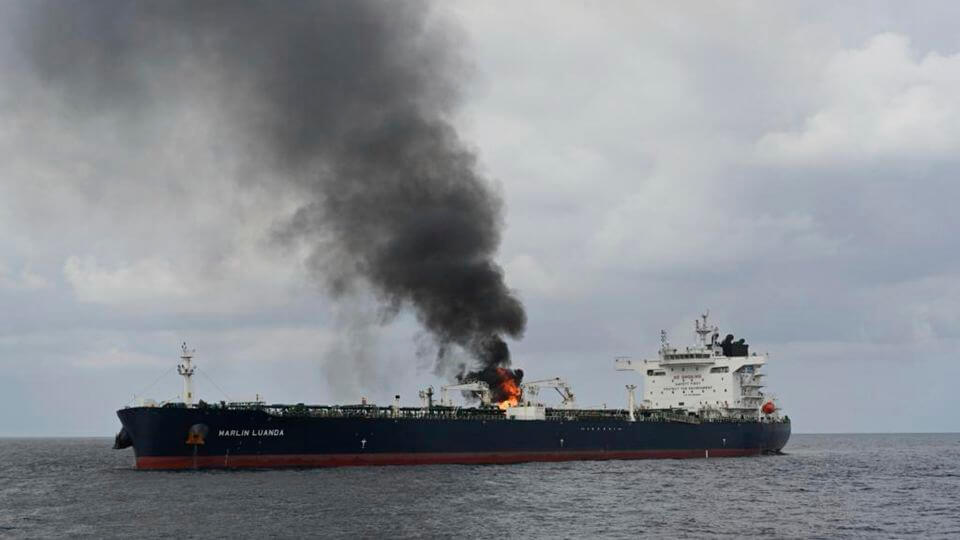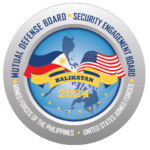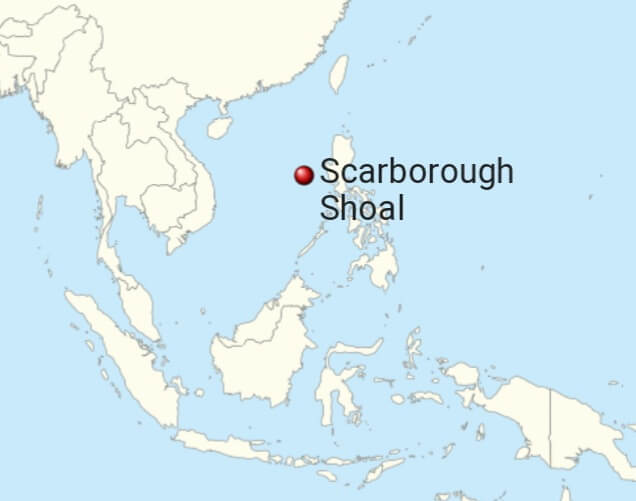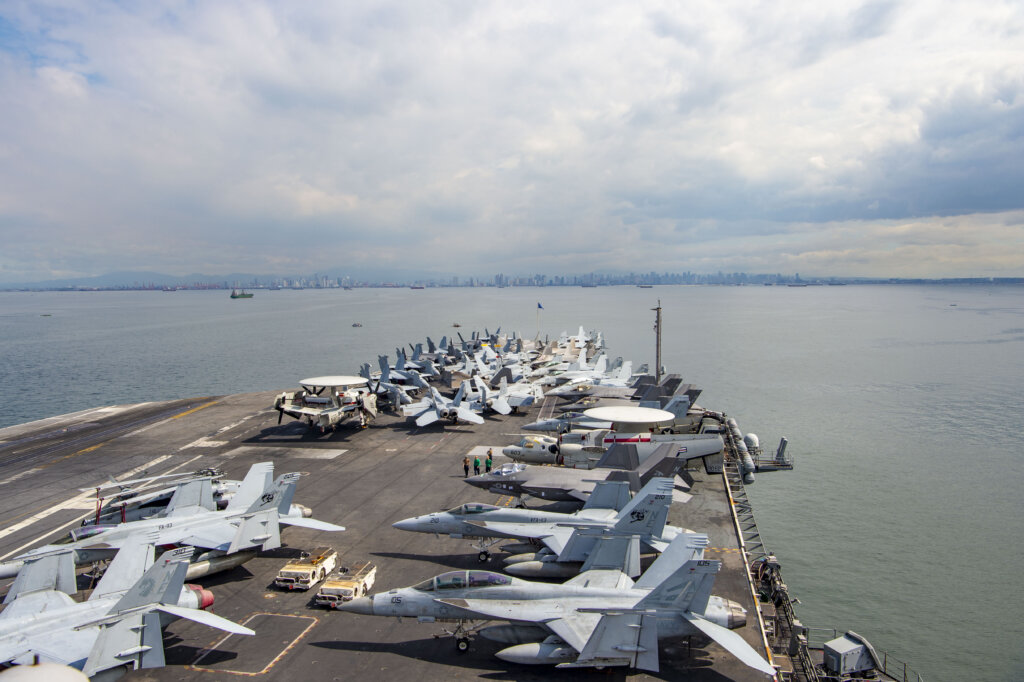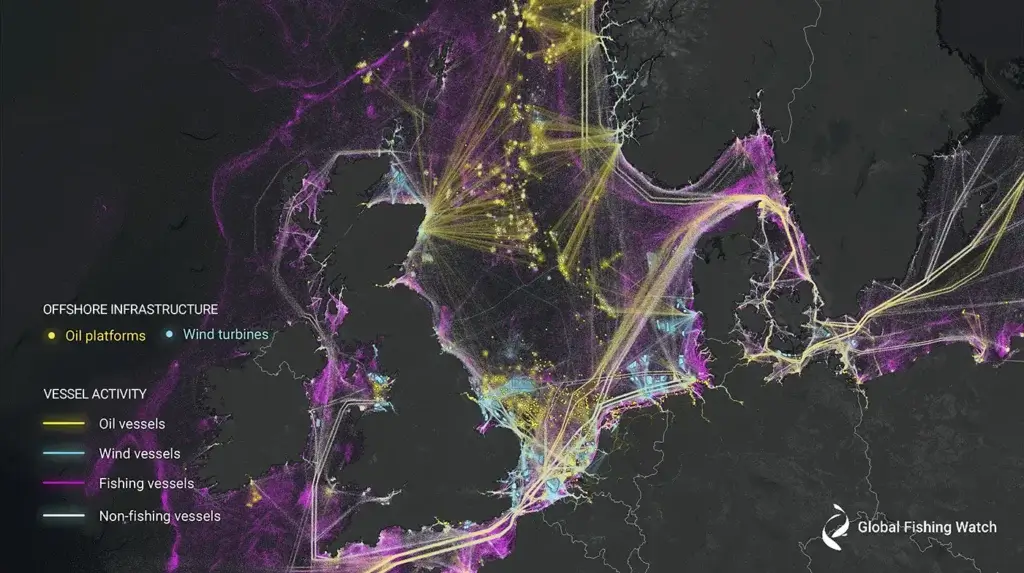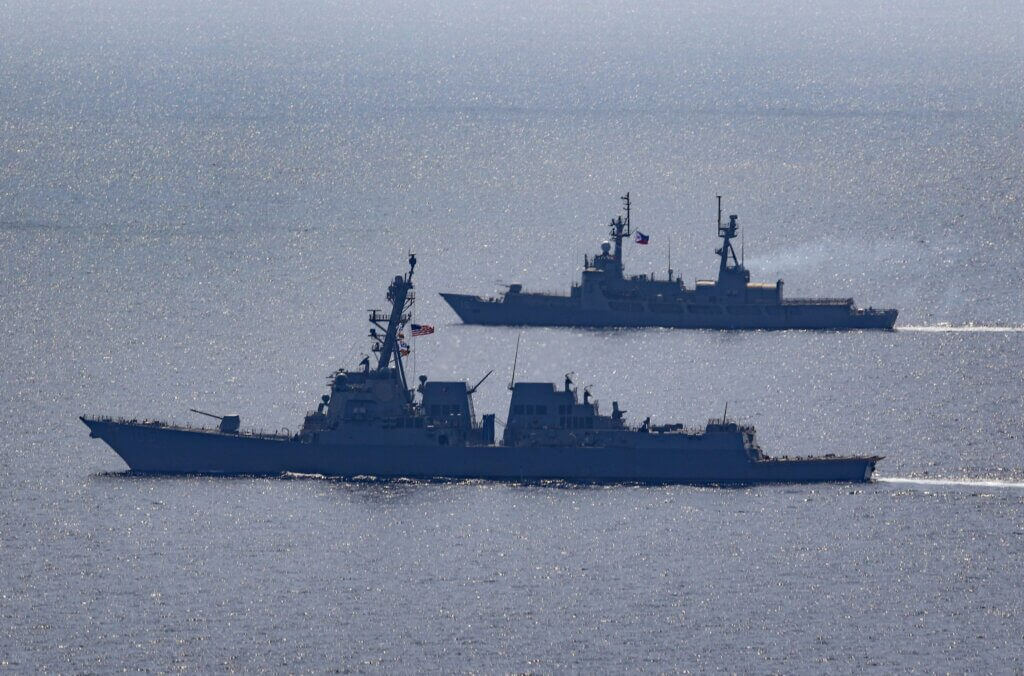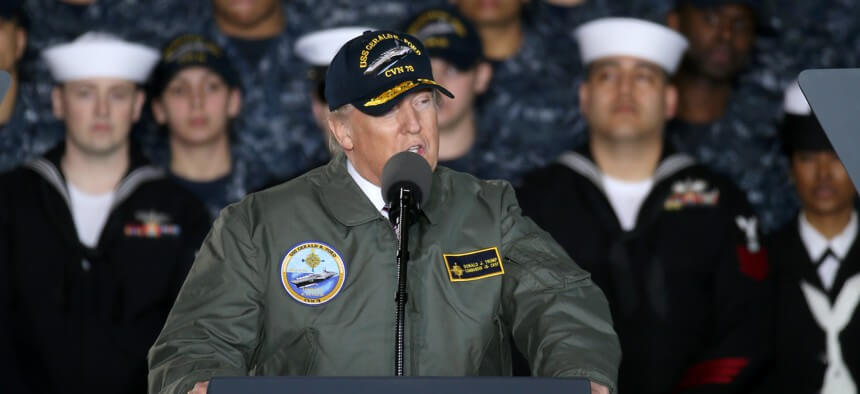
This week, the U.S. Navy demonstrated its unwavering commitment to global maritime security and operational excellence.
- Notably, the USS Stockdale engaged in a bilateral exercise with the Egyptian navy in the Red Sea, enhancing international naval cooperation.
- In the political arena, Donald Trump has been elected as the 47th President of the United States, marking a significant return to leadership. He is set to assume office as commander in chief on January 20, 2025.
- The USS John S. McCain returned to Naval Station Everett, marking the successful completion of its deployment.
- In a significant transition, Fleet Readiness Center Southwest bid farewell to its last legacy aircraft, the F/A-18 Hornet, symbolizing a new era in naval aviation maintenance.
- Additionally, the USS Oak Hill’s arrival in Limassol, Cyprus, underscores the Navy’s dedication to fostering international relations.
- These developments, among others, highlight the Navy’s continuous efforts to maintain global partnerships, enhance readiness, and honor its personnel.
Donald Trump Wins Second Term as U.S. President
Donald Trump has been elected as the 47th president of the United States, marking a significant comeback following his tumultuous first term.
U.S., Egyptian Navies Conduct Bilateral Exercise in Red Sea
On November 1, 2024, the USS Stockdale (DDG 106) participated in a bilateral exercise with the Egyptian navy in the Red Sea, enhancing interoperability and strengthening maritime partnerships.
USS John S. McCain Returns Home from Deployment
The guided-missile destroyer USS John S. McCain (DDG 56) returned to Naval Station Everett after a successful deployment, contributing to regional security and stability.
FRCSW Bids Farewell to Its Last Legacy Aircraft
Fleet Readiness Center Southwest (FRCSW) completed maintenance on its final legacy aircraft, an F/A-18 Hornet, marking a significant transition in naval aviation maintenance.
USS Oak Hill Arrives in Limassol, Cyprus
The Harpers Ferry-class amphibious landing dock ship USS Oak Hill (LSD 51) arrived in Limassol, Cyprus, for a scheduled port visit, fostering international relations and cooperation.
Deputy Under Secretary of the Navy for Intelligence and Security Visits NAVSCIATTS
Victor B. Minella, Deputy Under Secretary of the Navy for Intelligence and Security, toured the Naval Small Craft Instruction and Technical Training School’s facilities, emphasizing the importance of intelligence and security training.
HSC-26 Embraces History and Heritage Ahead of Veterans Day 2024
Helicopter Sea Combat Squadron (HSC) 26 hosted a former aviator from its predecessor squadron, HC-6, to discuss squadron history and heritage in anticipation of Veterans Day.
Navy Recruiting Command Announces FY25 Recruiting Goals
Navy Recruiting Command announced its recruitment goals for Fiscal Year 2025, focusing on innovative strategies to build a mission-ready force.
Cybersecurity Awareness Month 2024: A Message from the Chief of Naval Operations
Chief of Naval Operations emphasized the critical role of cybersecurity in safeguarding the Navy’s information and communications technology, urging all personnel to contribute to this effort.
Chief of Naval Operations Inducted into Rhode Island Italian American Hall of Fame
Adm. Lisa Franchetti, Chief of Naval Operations, received the 2024 Lifetime Achievement Award from the Rhode Island Italian-American Hall of Fame, recognizing her distinguished career.
USS The Sullivans Deploys
The guided-missile destroyer USS The Sullivans (DDG 68) departed Naval Station Mayport for a scheduled deployment, continuing its commitment to global maritime security.
SECNAV Announces Service Life Extensions for 3 Cruisers
The Department of the Navy plans to operate three Ticonderoga-class cruisers beyond their expected service life, adding 10 years of cumulative ship service life from fiscal year 2026 to 2029.
Readout of Chief of Naval Operations Adm. Lisa Franchetti’s Meeting with Chief of the Royal New Zealand Navy
Adm. Lisa Franchetti met virtually with Rear Adm. Garin Golding to discuss shared defense and security priorities, strengthening naval partnerships.
The Department of the Navy is Establishing a Naval Strategic Studies Group (NSSG) Program
The Department of the Navy is establishing a Naval Strategic Studies Group program in January, administered by the DON Office of Strategic Assessment, to enhance strategic planning and assessment.
SECNAV Announces Service Life Extensions for 12 Destroyers
Secretary of the Navy Carlos Del Toro announced plans to operate 12 Arleigh Burke-class Flight I Destroyers beyond their 35-year expected service life, ensuring continued naval readiness.
VCNO Visits Students, Navy Leadership in Newport
Vice Chief of Naval Operations Adm. Jim Kilby visited Newport, R.I., to meet with students and Navy leadership, discussing the achievements and lessons learned at Surface Warfare Schools Command.
U.S. Navy, Royal Navy, and U.S. Marine Corps Meet to Discuss Strategic Charter
Chief of Naval Operations Adm. Lisa Franchetti, Royal Navy First Sea Lord Adm. Sir Ben Key, and U.S. Marine Corps Deputy Commandant Lt. Gen. James Bierman Jr. met to discuss the ongoing strategic charter and celebrate the 10th anniversary of delivering combined seapower.
Assistant Secretary of the Navy Emphasizes National Call to Maritime Service and Education
Assistant Secretary of the Navy (Manpower & Reserve Affairs), the Honorable Franklin R. Parker, visited California institutions to emphasize the national call to maritime service and education.
Chief of Naval Operations, Master Chief Petty Officer of Navy Visit Gulf Coast
Chief of Naval Operations Adm. Lisa Franchetti and Master Chief Petty Officer of the Navy James Honea traveled to the Gulf Coast to engage with warfighters, discussing the Navy’s role in national defense.
U.S. Navy’s Newest Destroyer Honors a True American Hero
The latest Arleigh Burke-class destroyer honors a respected American hero, showcasing dedication to service.
Oldest Arleigh Burke Destroyers Receive Service Extensions
Selected Arleigh Burke-class destroyers will remain in service into the 2030s, ensuring operational readiness.
Russia Watch:
Satellite Images Show Russian Warships’ Unusual Movements
Russia temporarily vacated its Black Sea Fleet base, later returning the warships, raising questions about strategic maneuvers.
Russia Deploys ‘Most Dangerous Warship’
The Russian Navy has deployed a heavily armed warship, underscoring its naval buildup amidst rising global tensions.
China Watch:
China’s New Radar System Enhances South China Sea Surveillance
Satellite images reveal China’s construction of a new radar system on Triton Island in the South China Sea, potentially capable of detecting stealth aircraft, thereby enhancing its surveillance capabilities in the region.
China’s Rapid Construction of New Aircraft Carrier
Recent satellite photographs indicate that China has constructed a new aircraft carrier within six months, highlighting its rapid expansion of military-industrial capabilities and raising concerns among analysts.
Iran Watch:
Iran Plans Significant Increase in Military Budget
Iran’s government plans to raise its military budget by around 200%, as stated by government spokesperson Fatemeh Mohajerani, following recent exchanges of attacks with Israel.
Conclusion:
This week’s news highlights the Navy’s continuous efforts in honoring heroes, securing readiness, and advancing maritime partnerships. Keep up with more in-depth stories on our blog at 👉 strongernavy.org/blog.
Please support the Navy and the Americans for Stronger Navy by following us on Facebook or by completing the contact us page by clicking here.
#USNavy #Naval
